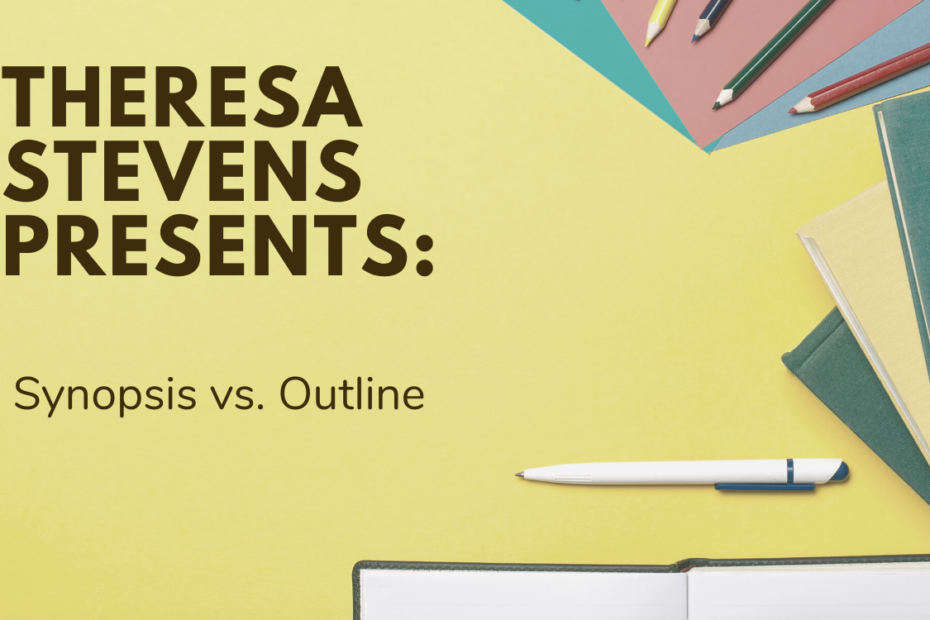This month, we’re answering a question from the FAQ files. This one comes up once every month or two, and it goes something like this:
My agent asked me for an outline of my next book. Is this different from a synopsis?
The answer is yes and no and maybe, depending on the how the person meant it. I know, that clears it up, right? So let’s look at how these terms are commonly meant.

An outline generally is:
1. A chapter-by-chapter capsule summary of a nonfiction book.
2. Think of it like an enhanced table of contents.
3. The purpose of an outline is to summarize the information which will appear in the finished book.
4. Its format will include chapter numbers, chapter titles and/or headings, and a point-by-point breakdown of topics covered in each chapter.
5. When we evaluate outlines, we’re checking whether the topic is meaty enough to fill enough chapters for a whole book.
6. We’re also checking whether the core thesis is thoroughly developed.
7. We’re also looking at things like organization of ideas, the way the chapters build upon each other, and so on.
Many nonfiction books are sold on an outline plus some configuration of sample pages, such as an introduction and sample chapter. We evaluate the sample pages for writing quality. We evaluate the outline for content. There will be other relevant questions, too, such as whether the author has a platform and how broad that platform might be, which might be addressed in the outline, cover letter, sample chapters, or pitch, but ought to be addressed somewhere. (“Platform” is an author’s established presence as an authority on a topic. It’s the professor of economics who writes a book about money management, or the personal trainer with a blog that takes 100,000 hits a month who writes about fitness.)
A synopsis generally is:
1. A narrative summary of a work of fiction or narrative nonfiction.
2. Think of it like enhanced jacket copy which relates the beginning, middle, and end of the story.
3. You will use your synopsis to introduce your main characters, establish the themes, and describe the events in the plot.
4. The synopsis might mirror the flow of events in the plot in a chapter-by-chapter manner, but it will still be presented in narrative format.
5. A synopsis rarely uses headers and similar material, except that some formats have separate paragraphs to introduce characters. In that case, those paragraphs are sometimes headed “Characters,” and the plot summary is headed “Plot.” But these formats are less common than ordinary narrative formats.
6. When we evaluate a synopsis, we’re checking that the plot is interesting and coherent.
7. We’re also checking whether the characters are interesting, but that might be easier to determine from sample pages. The synopsis will at least give us a starting point, though.
8. We might also be checking for other things like writing quality and tone, but the sample pages usually will be more useful for that purpose.
Many novels, memoirs, and other narrative works are sold on a synopsis plus some configuration of sample pages (generally the first seventy-five to one hundred pages or thereabouts). The purpose of a synopsis is to give a flavor of the tone and characters, the complete but condensed plot, and perhaps some thematic or other elements.
The kicker is that many people use these terms interchangeably. Or maybe they’re so used to asking for one that they use that one term without realizing they want the other document. Or maybe they’ll assume you know which format they actually want. In other words, even though there’s a technical difference between an outline and a synopsis, there’s a bit of looseness in the way we use the terms.
So what’s a writer to do?
If this is someone you’ve got an established relationship with, just ask them which they would prefer. “Do you want a chapter-by-chapter outline or a narrative synopsis?” See how easy that is?
If this is an over-the-transom submission and asking might be awkward, you can either check their submission guidelines for clarification, or you can assume that a narrative work takes a narrative synopsis. That assumption is probably safe, but there may be rare cases when it’s not. So if you’re uncomfortable with this assumption and the submission guidelines are silent, you might have to find a graceful way to ask for clarification. “Sorry to trouble you. I checked your guidelines and couldn’t find the answer. Do you want a narrative synopsis or a chapter outline?”
So now that we know the difference between a synopsis and an outline, do you have any questions about formats?
Theresa
Got a question for the editor? Email it to askaneditor at romanceuniversity dot org.
* * *
Theresa, thanks for the clarification about these two important writing tools!
Join us on Monday when writer and Facebook guru Haley Hughes provides an in-depth look at how writers can make FB work for them.
Theresa’s Bio:
Theresa Stevens is the Publisher of STAR Guides Publishing, a nonfiction publishing company with the mission to help writers write better books. After earning degrees in creative writing and law, she worked as a literary attorney agent for a boutique firm in Indianapolis where she represented a range of fiction and nonfiction authors. After a nine-year hiatus from the publishing industry to practice law, Theresa worked as chief executive editor for a highly acclaimed small romance press, and her articles on writing and editing have appeared in numerous publications for writers. Visit her blog at http://edittorrent.blogspot.com/ where she and her co-blogger share their knowledge and hardly ever argue about punctuation.
